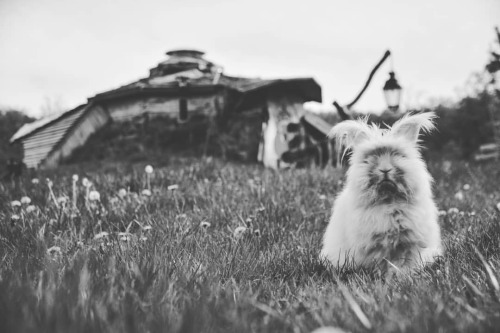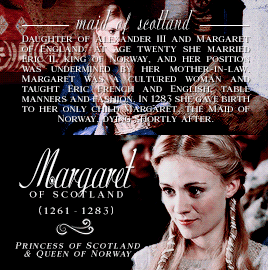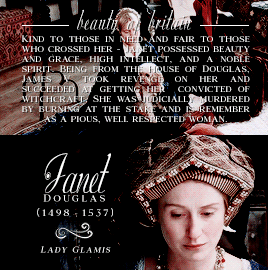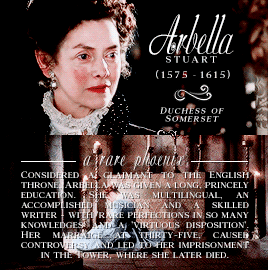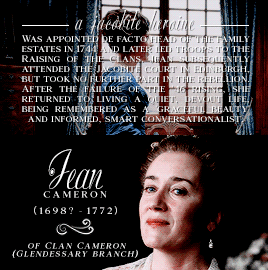#scottish history
The Ladies♔Princesses → Isabella Stewart, Duchess of Brittany (1426 - c.1495/99)
Isabella of Scotland was born in 1426 as the second child and daughter of James I and Joan Beaufort. Although there is no details of her childhood, a report before her marriage describes her as being “a well-brought-up young lady, schooled to silence and submission.” By the age of sixteen she married Francis I, Duke of Brittany in front of Bretons and Scottish nobles on 30th October 1442. The marriage appears to have been cordial and the couple had two daughters. In 1450 Francis died and Isabella was pressured by her younger brother James II to return to Scotland, where he had hoped to arrange a second marriage for her. However, Isabella refused, claiming that she was happy and popular in Brittany; along with being too frail to travel. It was more than forty years later, when Isabella died as early as 1495 and as late as 1499, and lived long enough to see the reign of her grandnephew James IV. She was either buried in Nantes or Vannes.
“In both piety and patronages, she could be matched by others in her world. Her life is of interest, nevertheless, because it provides precious evidence of the tastes of one particular woman, shaped by current fashion in devotion. Beneath the splendid trappings and ceremonial routine appropriate for her rank, Isabella attempted an internal pilgrimage as a private soul, a day by day progress on a path to spiritual enlightenment.” — Elizabeth Ewan and Maureen M. Meikle (editors), Women in Scotland c.1100 - c.1750
Post link
A portrait of Joan Beaufort, Queen of Scots by an unknown artist.
Jane, d. 1445. Queen of James I; daughter of John Beaufort, Duke of Somerset
Gallery: Scottish National Portrait Gallery (Print Room)
Date created: Published 1798
Post link
Portrait of a group of deer hunters posing on a hillside in Glenfeshie, Scotland, c. 1858. Taken by Scottish photographer Horatio Ross.
Source: Metropolitan Museum of Art.
Post link
Bless the ground so the snakes stop biting people.
Irish Missionary Tells You To Stop Eating People Who Swim In The Loch (You’re Nessie) [ASMR]
“The Beacon”
www.youtube.com/watch?v=DehT2eN5G2w
Music by Cnoc An Tursa
(This song is called The Yellow Locks of Charlie taken from their forthcoming album named The Forty Five which will be released by Witchcraft Recordings in January or early February, 2017.
Cnoc An Tursa is a Celtic/folk black metal with an influences of epic black metal, Scottish history, poetry. The band is coming from Falkirk, the UK. It was found in 2006.
Here’s the current lineup:
Alan Buchan [guitars | see also: ex-Demonic Rising],
Rene McDonald Hill [guitars and keyboards | see also: ex-Saor(live)],
Bryan Hamilton [drums| see also: ex-Barshasketh, ex-Saor(live)],
Tony Dunn [bass | see also: Blackwork, ex-Falloch].)
Artwork by René Aigner
Post link

urquhart castle
I have literally no influence on even the smallest section of this website so I don’t know why I’m posting this, except that I really feel that tumblr would love it:
If you’re going to Edinburgh (or already live there), and you like old houses, you might enjoy Gladstone’s Land. It’s one of the oldest houses on the Royal Mile; it’s tall and thin (six storeys above ground) with a forestair, arcaded shopfront and Renaissance painted ceilings; you can visit three floors, or stay for a holiday on one of the others, and there’s an ice cream parlour/coffee shop on the ground floor; and there are also special private tours (for example, a sexual history of Edinburgh) which I really feel would be right up the tumblr history community’s street.
It doesn’t take very long to go around so it depends how much someone wants to spend like £7 on visiting an elderly Scots tenement but as someone who liked visiting very much, I do feel it gets overlooked and could give people a much better idea of Edinburgh’s history than some of the other stuff on the High Street, a lot of which is aimed at entrapping unfortunate tourists with tartan fiction.
I mean here’s the wikipedia page so while I’ve not sold it very well, I’d hope to convince at least one person that if you are visiting Edinburgh then you could do worse than add it to your itinerary, maybe as a quick, quiet after-lunch attraction.
Oh! And they let you touch stuff in there too, even the antiques! I mean, obviously one should be careful handling old items and in most cases I would not even want to touch but in this one they’ve obviously thought about what can withstand it and that definitely made it a bit more relaxed (those with children- a small number on Tumblr I know- take note).
A 1797 copper engraving of Margaret (Stewart) of Scotland, Dauphine of France (1424-1445), published in ‘Iconographia Scotica’ by John Pinkerton.
Post link
This was Dunoon rising up to demand an Independent Scotland in 1950. Notice the placards “Labour has betrayed Scotland”
Post link

On this day in 14 September 1867, volume one of Karl Marx’s ‘Das Kapital’ first appeared in Germany. Since then it has been studied widely by workers around the world wanting to understand capitalism. While lengthy, it is definitely worth a read at some point.
From chapter 27, Marx emotively recounts the violent theft of common lands in Britain which laid the foundations of the capitalist system. For example, in 18th century Scotland;
“the hunted-out Gaels were forbidden to emigrate from the country, with a view to driving them by force to Glasgow and other manufacturing towns. As an example of the method obtaining in the 19th century, the “clearing” made by the Duchess of Sutherland will suffice here. This person, well instructed in economy, resolved, on entering upon her government, to effect a radical cure, and to turn the whole country, whose population had already been, by earlier processes of the like kind, reduced to 15,000, into a sheep-walk. From 1814 to 1820 these 15,000 inhabitants, about 3,000 families, were systematically hunted and rooted out. All their villages were destroyed and burnt, all their fields turned into pasturage. British soldiers enforced this eviction, and came to blows with the inhabitants. One old woman was burnt to death in the flames of the hut, which she refused to leave. Thus this fine lady appropriated 794,000 acres of land that had from time immemorial belonged to the clan. She assigned to the expelled inhabitants about 6,000 acres on the sea-shore — 2 acres per family. The 6,000 acres had until this time lain waste, and brought in no income to their owners. The Duchess, in the nobility of her heart, actually went so far as to let these at an average rent of 2s. 6d. per acre to the clansmen, who for centuries had shed their blood for her family. The whole of the stolen clanland she divided into 29 great sheep farms, each inhabited by a single family, for the most part imported English farm-servants. In the year 1835 the 15,000 Gaels were already replaced by 131,000 sheep. The remnant of the aborigines flung on the sea-shore tried to live by catching fish. They became amphibious and lived, as an English author says, half on land and half on water, and withal only half on both.”
When the Black Death finally made its way to England in 1348 after travelling across Asia and Europe, it was met with much amusement by the Scots, who said the English’s misfortune ‘had befallen them through the revenging hand of God’ and eagerly awaited the ‘foul death of England‘.
Now due to Scotland’s climate, they had escaped the plague for a tad longer than some other countries, due to it being too cold for the fleas that transmitted the disease, but this streak came to an abrupt end in 1350 with the decision by some Scottish nobles to send soldiers South with the intention of conquering England…
Only for the Scottish soldiers to catch the plague after attacking Northern English towns and cities like Durham, quickly realise that they weren’t as immune to the disease as they originally thought, and then as the armies fled back but North the rats and fleas came with them and introduced the plague to Scotland en masse.
As contemporary English chronicler Henry Knighton wrote: “The Scots, hearing of the dreadful plague among the English, suspected that it had come about through the vengeance of God, and, according to the common report, they were accustomed to swear “be the foul deth (sic) of Engelond (sic)”. Believing that the wrath of God had befallen the English, they assembled in Selkirk forest with the intention of invading the kingdom, when the fierce mortality overtook them, and in a short time about 5,000 perished.
“As the rest, the strong and the feeble, were preparing to return to their own country, they were followed and attacked by the English, who slew countless numbers of them.”
In a far less murderous example fo history repeating itself, there has been a recent spike in corona virus cases in Scotland in the past couple of months… which people have concluded is due to folks coming down to London for the Euro 2020 football matches, with 2000 cases being linked to linked to people travelling South for the event.
So yeah, social distancing. It’s there for a reason, and travelling in large numbers to an area you know is riddled with disease is a bad idea.
Post link
Scottish infantry of the Earl of Orkney’s Royal Regiment advance at the battle of Malplaquet, 11 September 1709. By Graham Turner.
Post link







